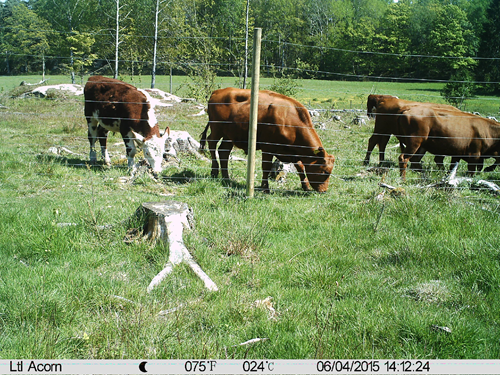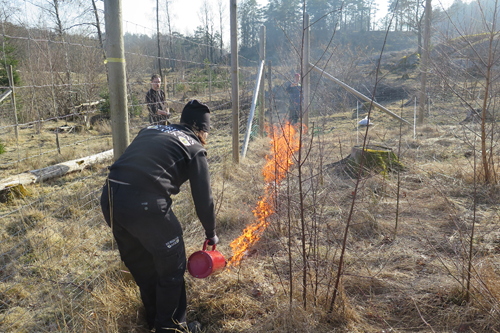Cows + fire = true
In a unique study, Nordens Ark has shown that cattle prefer to graze where there has been a recent fire. This has previously only been shown on other continents but never in the northern parts of Europe.

Betande kor fotograferade av kamerafälla i Ekoparken på Nordens Ark
It has been known for a long time that fire makes the vegetation more nutritious, by removing old and nutrient-poor vegetation and making room for new and nutritious vegetation. In recent decades, scientists have also studied how this affects the behavior of grazing animals on several continents, especially in Africa and North America, sometimes called “pyric herbivory”. But this has never before been studied in northern Europe. In a unique study, Nordens Ark, has been able to show that cattle on pasture choose to graze where it has recently burned, by using camera traps.
Although this has been shown elsewhere before, it means new knowledge when we have now been able to show that grazing animals behave in the same way under our conditions, as in other parts of the world, says Karin Amsten, one of the researchers in the study.
In the study, camera traps were used to follow the behavior of grazing cattle. By analyzing the videos from the cameras, the researchers could see that the cattle chose to graze on the part of the pasture that had recently been burned. This affected the amount of fuel for the next burning. In addition, it also affected the composition of the vegetation to some extent, which plays an important role for biodiversity.
The fact that the cattle prefer to graze where there recently has been a fire, shows that we could use fire together with grazing, i.e. pyric herbivory, to increase the variety in the landscape, Karin continues, which would improve the conditions for biological diversity which depends on a varied landscape.
The study was carried out in Nordens Arks Ekopark in collaboration with Sweden's University of Agriculture and the Mammal Research Institute in Poland. The entire study can be read here http://doi.org/10.1111/1365-2664.14618

Eldning i Ekoparken. Foto: Aron Rose Melz










